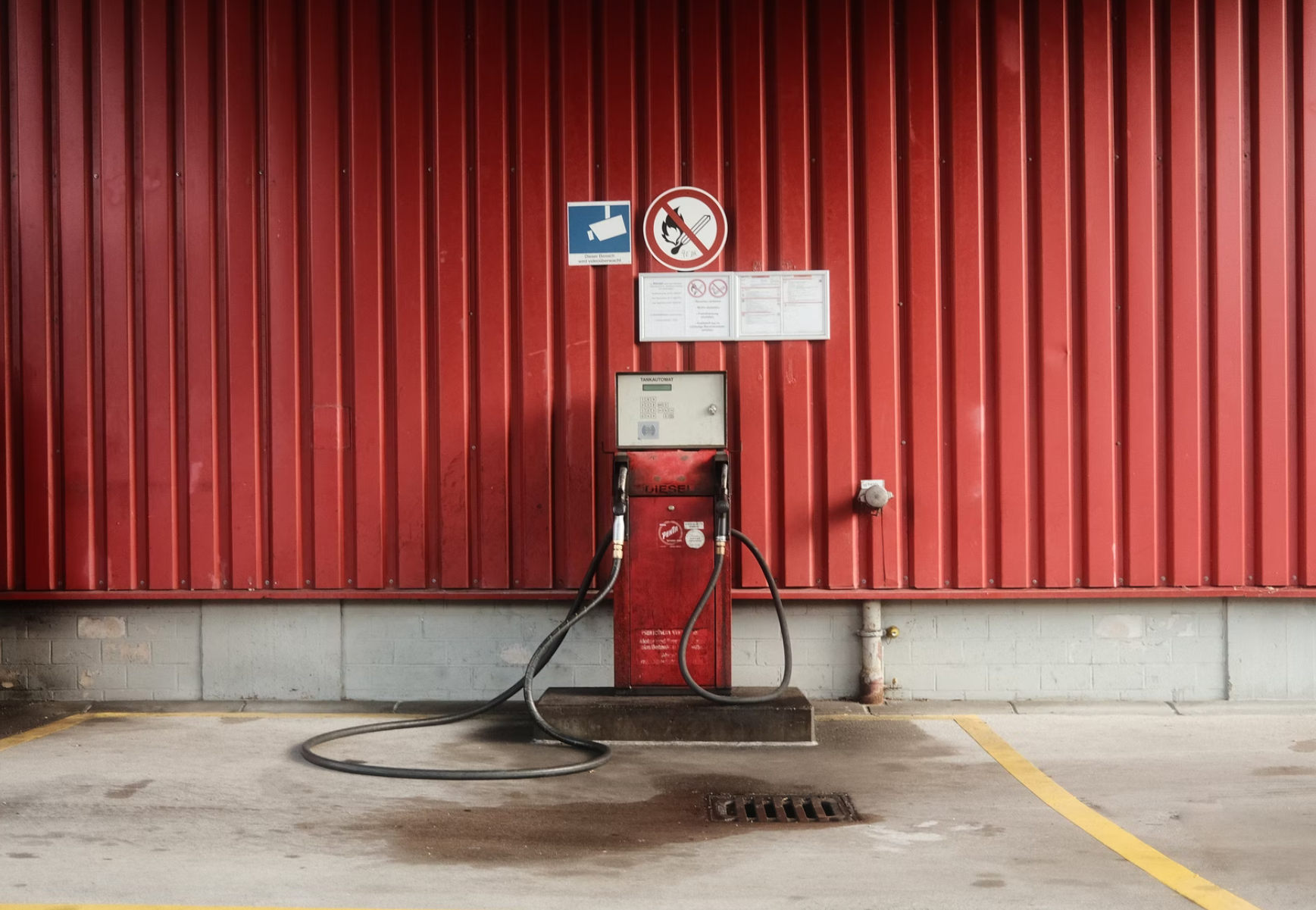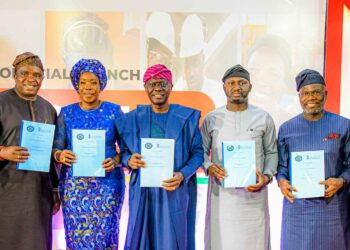October 2022 review: In the month under review, there have been some interesting developments in the oil, gas and energy sectors. We shall be covering the most important ones.
1. Nigerian Oil Production: Force Majeure season.
September 2022 was arguably the darkest month on record for the Nigerian oil and gas industry – record low production, force majeure on most of the onshore terminals, industrial scale pipeline sabotage and abysmally low gas production. May we never witness such again.
By mid-October, it was reported that Forcados, Bonny and Brass have adjusted their force majeure declarations, indicating potential for more oil liftings, some breather for the industry and a dollar starved economy. It was not meant to be because another natural and made disaster struck the Niger Delta region. The highest level of flood ever recorded in Nigeria disrupted operations, hindered access to flow stations and wellheads, cut off populations, compelling operators to declare another round of force majeures. The Nigerian Liquified Natural Gas Limited (NLNG) had to declare a third party triggered force majeure, causing some panic in the LNG and LPG market.
This year’s flood is not the first to disrupt operations but compared to recent year’s, this was extraordinary in scale and spread. It rendered the most competent useless. As Austine Avuru has eloquently opined in this article, the likelihood of a repeat is high if concrete steps are not taken. The oil, gas and energy industries can establish business continuity plans that can help mitigate these perennial floods
2. Rig Count
Rig count in Nigeria for September 2022 dropped from 10 to 7 compared to August 2022.
3. Oil prices : OPEC versus Joe Biden
Early in October, OPEC+ which effectively comprises of OPEC countries and Russia/Mexico announced a somewhat surprising oil production cut of 2 million barrels. In response, the US government threw a fit and the western press quickly labelled the action as sabotage, projecting that Saudi Arabia had aligned with Russia in using crude oil as a political tool. On the surface, this seemed quite the most immediate explanation considering the unfriendly posture of the Saudi leader, MBS and the US government in recent times. Oil prices will play a significant role in the mid-term elections in the USA and Biden read the cut as an affront and as some democrats even suggested, it was a move to help the Republicans. It was not so.
OPEC, or more specifically, Saudi Arabia despite its social reputation has proven over the last five decades to be a stable, rational, dispassionate and calculating player in the global oil market. Trawl through oil history and there are numerous examples of where Saudi has consistently acted in the interest of balancing the market even at cost it can afford.
They are very conscious of their dominance and always argue for rationality in the market, rarely ever mixing politics with economics. The oil price crash of 2014 – 2016 can be attributed to shale oil and the lack of cooperation between producers when the Saudis asked for it. Anyway, after everyone suffered, we did not just have a stronger OPEC but even had OPEC+.
This latest oil production cut was just classic OPEC/Saudi prioritising economics over politics to ensure a stable market. For OPEC, a ‘stable market’ is the range of production or ’price’ that doesn’t hurt the consuming economies but still supports investment in oil and gas. It is a very delicate art.
OPEC revised its 2022 oil demand forecast downward from 3.1mb/d to 2.6mb/d and its 2023 forecast to 2.35mb/d. The International Energy Agency owned by the developed nations also downgraded its production forecast to 1.9mb/d in 2022 and 1.7mb/d for 2023. Furthermore, the crude oil that gulf countries typically burn in the summer will return to the markets, winter demand will taper.
The consensus around these forecasts is that demand will slow because of the risk of recession, geopolitical risks, even if China fully reopens. Its noteworthy that until September, OPEC production had increased for four months in a row in addition to the relentless release of crude oil from the United States’ Strategic Petroleum Reserve. OPEC knew that without a cut, prices may drop precipitously, damaging the market and jeopardising future investments.
OPEC has been proven right. Since the announcement of the OPEC cut, oil prices have actually remained stable close to the $100/bbl ‘equilibrium’ mark that OPEC wants oil price to hover around.
4. The coming diesel crisis: Store, hedge or switch.
Two factors have contributed to the escalating prices of middle distillates such as diesel and petrol compared to crude oil: the naïve and derisory treatment of the oil and gas industry culminating in the closing of about 2 million barrels per day refining capacity across the world and the Russian invasion of Ukraine.
In Nigeria, diesel has risen from as low as N300/Litre early this year to as high as N900/litre. Unfortunately, these high prices are set to persist or worsen as diesel inventories in key hubs have fallen to levels not seen in 40 years. More specifically, the Ney York Harbour prices have skyrocketed in recent weeks, triggering diversions from markets such as Nigeria to the US. In dollar terms, diesel is as high as $200/bbl and winter has not even started when peak demand for diesel peaks.
That portends serious dangers for businesses that rely on diesel in Nigeria. First, prices are high on the international market but more damaging is the fact that since diesel is deregulated in Nigeria, there are no subsidised exchange rates for diesel imports, so traders/importers have to source for dollars at the black market which is at N800/$ now. This combination of headwinds puts business is mortal danger. It would not be a surprise if diesel is sold at N1000/litre in the next few weeks.
Options for heavy diesel users is to store a lot, buy financial hedges on the market or just switch to natural gas products like CNG, LNG or LPG. The Return on Investment (ROI) on switching has improved significantly especially since natural gas prices in Nigeria are indexed to the heavily regulated CBN exchange rate.
5. Otedola sells part of Geregu
Femi Otedola, via his company Amperion Power listed part of his stake in Geregu Power Limited by introduction on the Nigerian stock exchange. The power plant is located close to Ajaokuta in Kogi State. This was an unexpected move by the businessman as before now, no pure play power company has been listed on the Nigerian stock exchange.
The shares of the company being listed was valued at N250 billion on the first day but it has slightly increased even though it is difficult to confirm the percentage of the power plant’s shares still being held by Amperion Power. There are suggestions that Otedola sold the shares to prepare for the acquisition of the power plant built by NIPP also in Geregu. Otedola also sold some of his holdings in First Bank earlier in the year.
The Q3 results for Geregu Power was released in October and the results were poor compared Year on Year. Lack of gas supply and high financing costs were said to have affected the company’s performance. From all indications, these two challenges may persist for longer.
The location of the power plant in Ajaokuta is a disadvantage as it is in the Northernmost fringe of the existing pipeline network, exposing it to less reliable gas supply. There are limitations to its possible gas producers’ options because it cannot directly access the Escravos-Lagos Pipeline System (ELPS) like many of its peers and during gas curtailments, the plant suffers from lower pressure.
However, there may be some silver lining in the future with the completion of the Ajaokuta-Kano-Kaduna pipeline. When this pipeline is completed, Geregu will have access to a diversified gas supply source and that may improve its performance.
6. NUPRC’s Gas Flare Commercialisation Programme: Double jeopardy for oil producers.
The most significant but often understated change in the Nigerian energy industry in recent times is on gas flare management. The 2018 regulation on gas flare has emplaced a quiet but devastatingly impactful regime of gas flare penalties that is reshaping the industry.
This regulation retained the Federal Government’s right to take flare gas from any field free of charge and also increased gas flare penalties by about 8000% from N10/Mscf up to N822/Mscf (about $2/Mscf). This has meant that every field flaring gas routinely or occasionally has racked up humongous debts that are not tax deductible.
The FG owns gas flare, exercising its rights through the upstream regulator, DPR/NUPRC. In 2016, DPR announced a scheme where it invited interested bidders to vie for the gas flare from various flare points across the country.
The oil producers flaring the gas were prohibited from taking the flare gas and could also not directly bid to monetise their own flare gas. It was meant to be ’hands off’ for the oil producers. Unfortunately, DPR stalled the process until this concluded month of October where the head of NUPRC announced a resuscitation of the scheme and promised to conclude the process by December 2022.
Now, there are lot of questions that this flare gas comercialisation programme brings to fore. Since NUPRC has brought all the flare gas points into its bidding basket since 2016, does it have any right to still charge the companies penalties.
The oil producers were told to hands off and do nothing but has also been charged penalties for gas flaring. It is a double jeopardy that needs to be addressed.
7. Amni-Afrexim financing: A template to survive the ESG trap.
At the sidelines of the just concluded Africa Energy Week in Cape Town, Nigerian independent Amni Petroleum signed a Memorandum of Understanding (MOU) worth $600Mn with the Afrexim Bank, pan-African multilateral trade finance institution created in 1993 under the auspices of the African Development Bank.
Afrexim has been playing in the Nigerian energy scene in the last few years, supporting NNPC, Dangote with financing. This seems to be the first financing deal with a Nigerian upstream producer and it may just be a template for others in Nigeria as ESG constraints choke financing for oil and gas activities.
Nigerian oil companies trying to raise financing know that ESG issues are not just a fad but a potent adversary these days. The commitment of the West (especially Europe) to stymying financing to oil and gas is extraordinary and bordering on religious zealotry.
Raising financing will continue to get more difficult as the rich nations continue to become less pragmatic about energy transition. The Equator principles which compel financial institutions to finance only oil and gas deals that meet certain ESG baselines have introduced a costly dimension for the Nigerian oil and gas industry. We must adapt or die.
First option is to attempt to meet these new baselines no matter the cost. Secondly, Nigerian banks capacity to finance the industry needs to be rejigged after the failures of the last decade. Thirdly, it has become very important to bolster African supranational trade finance institutions like Afrexim, African Development Bank, African Finance Corporation to undertake more of these financing that are typically sourced from now ESG encumbered sources.
The Asian Development Bank, Asian Infrastructure Investment Bank are regional institutions that continue to support investments without the handbrakes imposed by western institutions. Admittedly, compared to these Asian institutions, the total assets and capital raising capacity of our African institutions are smaller but that can be addressed.
8. Deepwater Bid round
The upstream regulator, NUPRC announced its plans to float a bid round for some Deepwater assets in 2023. This will be the first bid round for full acreages in 15 years. The CCE, NUPRC said, “All the blocks are in the Lagos waters, not in the Niger Delta, with the added advantage of its proximity to the export-free zone in Lagos.’’
This implies that these blocks will be in the Dahomey Basin, an under exploited basin compared to the Niger Delta. Geologists have argued that the Dahomey basin is an extension of the Niger Delta basin, which starts from the Okitipupa ridge to Southeastern Ghana.
The Aje field located close to Lagos and the Ogo field, a subject of controversy are discoveries in these areas open for bids. Media reports on Ogo field were estimated at P50 to P10 recoverable resources in the 774-1,180 MMboe range, 40° API and a condensate-rich gas reservoir.
This prognosis is similar to Aje field’s API which is reported to be in the lower 40s. Beyond these two discoveries, not much have been seen on the Nigerian part of the basin. In Benin Republic, Theophilus Danjuma’s Sapetro hit a duster after some exploration while nothing significant has been reported in the neighbouring countries of Togo.
The bid round will test the appetite of the majors to bet on Nigeria’s offshore where there is less above ground challenges and with the Petroleum Industry Act, fiscal terms are now very clear. The Dahomey basin seems to be very gas and condensate rich which could be an attraction for companies seeking to pursue FLNG options.
The very generous terms for derivative condensate in the PIA also may prove to be a fillip for the economics if the finds are considered big enough. Unfortunately, the bids cannot come fast enough because in the most optimistic scenario, the first oil/gas from these fields on the ballot will only come in 5 – 10 years’ time ceteris paribus. Nigeria needs all the investment it can secure right now and this bid round is a very necessary step.
To get this once every month in your inbox, subscribe to the industry newsletter. Make sure to check this newsletter out of your spam box.





















Kudos on a Well written and comprehensive report.